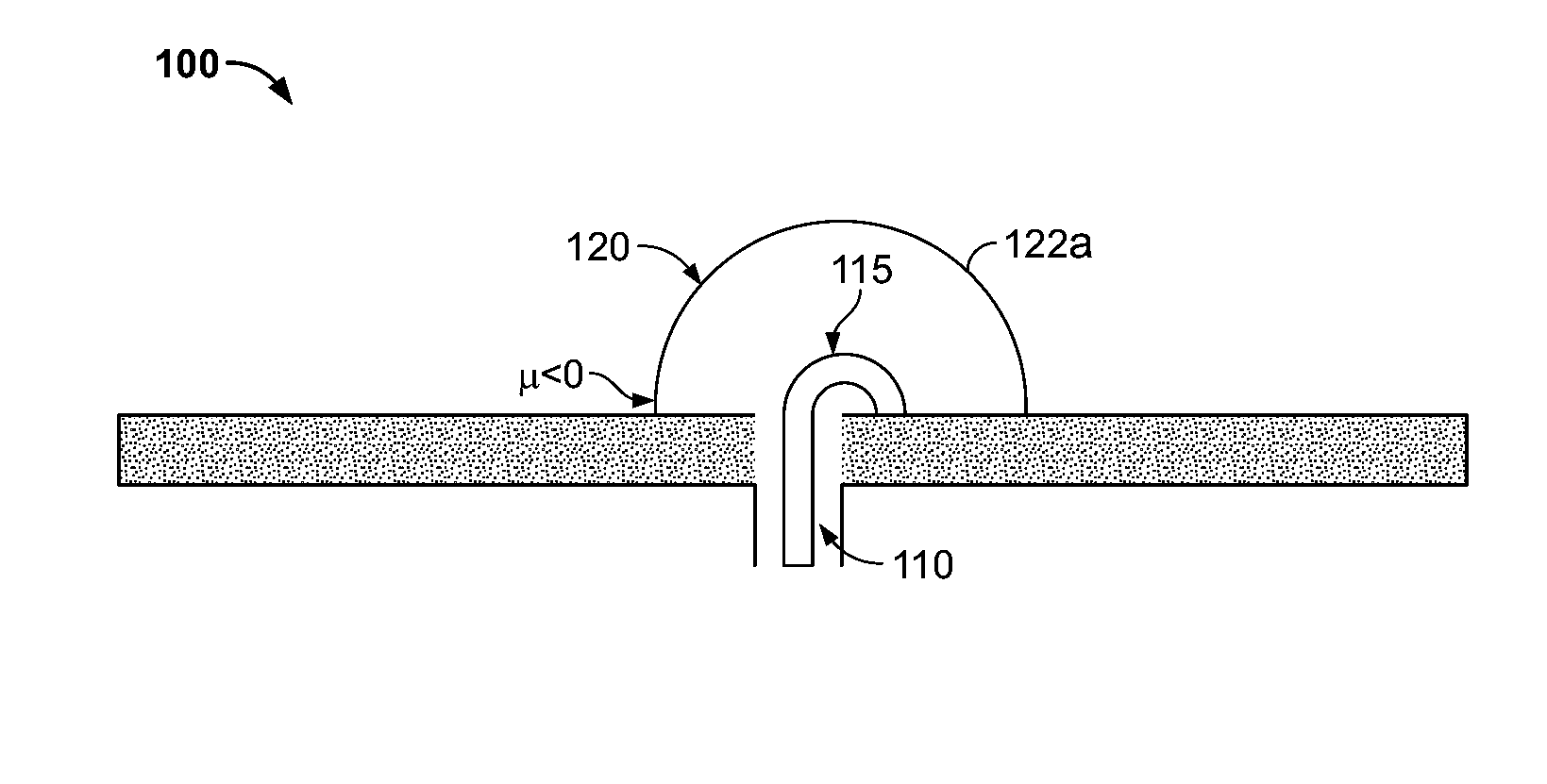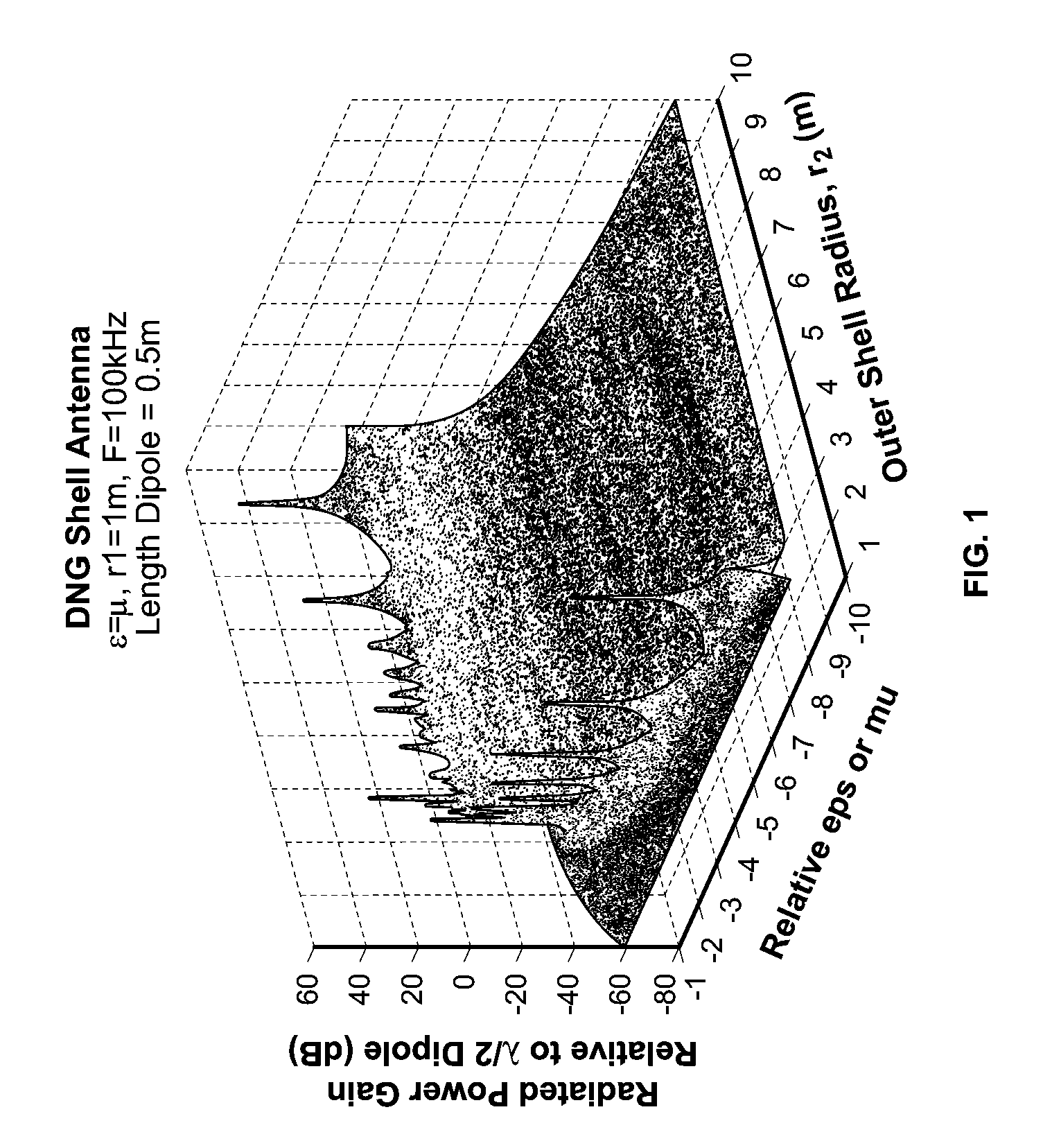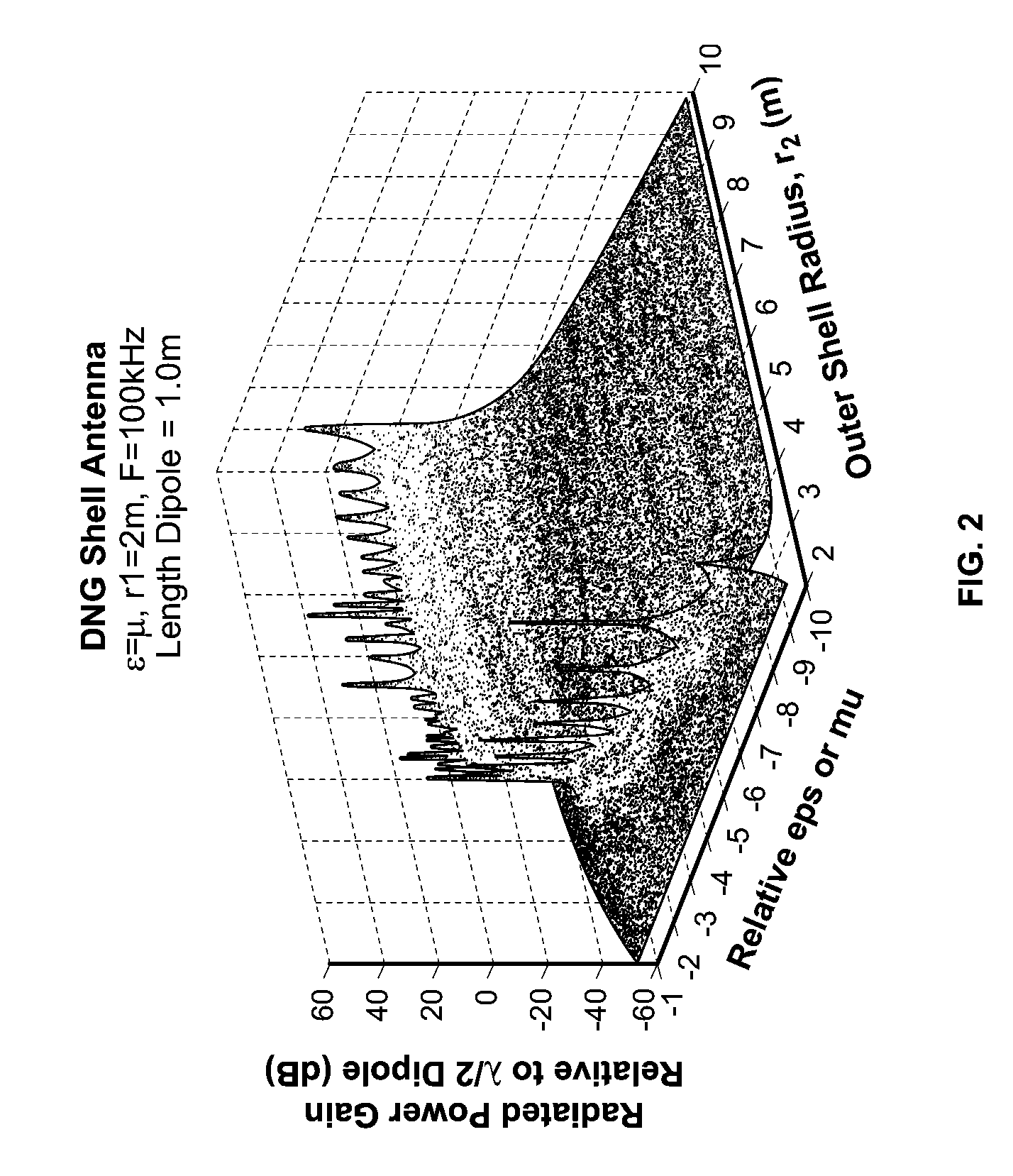Electrically small antenna
a small, antenna technology, applied in the direction of antennas, antenna feed intermediates, antennas, etc., can solve the problems of difficult to detect, locate or map such underground facilities, radar does not penetrate the earth's surface, waves are reflected and attenuated, etc., to achieve efficient transmit/receive capability, light and efficient
- Summary
- Abstract
- Description
- Claims
- Application Information
AI Technical Summary
Benefits of technology
Problems solved by technology
Method used
Image
Examples
Embodiment Construction
[0028]The ESA of the current invention is on the order of meters and has an efficient transmit / receive capability compared to a regular dipole. The ESA is constructed using metamaterial concepts. The metamaterial may be single negative (SNG) (i.e. the permittivity ε<0, or the permeability μ<0) or double negative (DNG) (i.e. both the permittivity ε<0 and the permeability μ<0). In an exemplary embodiment, an ESA is disclosed that is 1 / 10 of the length of the equivalent dipole length, and may be scaled down to 1 / 1000 or 1 / 10,000. Such an ESA may include phase sensitive current injection in the metamaterial resonant structures for loss-compensation. In other words, the unit cells of the ESA may be driven by a current source that is in phase with the exciting electromagnetic wave. The ESA may include a magnetic or electric dipole, and the metamaterial resonant structure may be a metamaterial shell or a metamaterial hemispherical structure. In one embodiment, the ESA includes a magnetic d...
PUM
 Login to View More
Login to View More Abstract
Description
Claims
Application Information
 Login to View More
Login to View More - R&D
- Intellectual Property
- Life Sciences
- Materials
- Tech Scout
- Unparalleled Data Quality
- Higher Quality Content
- 60% Fewer Hallucinations
Browse by: Latest US Patents, China's latest patents, Technical Efficacy Thesaurus, Application Domain, Technology Topic, Popular Technical Reports.
© 2025 PatSnap. All rights reserved.Legal|Privacy policy|Modern Slavery Act Transparency Statement|Sitemap|About US| Contact US: help@patsnap.com



